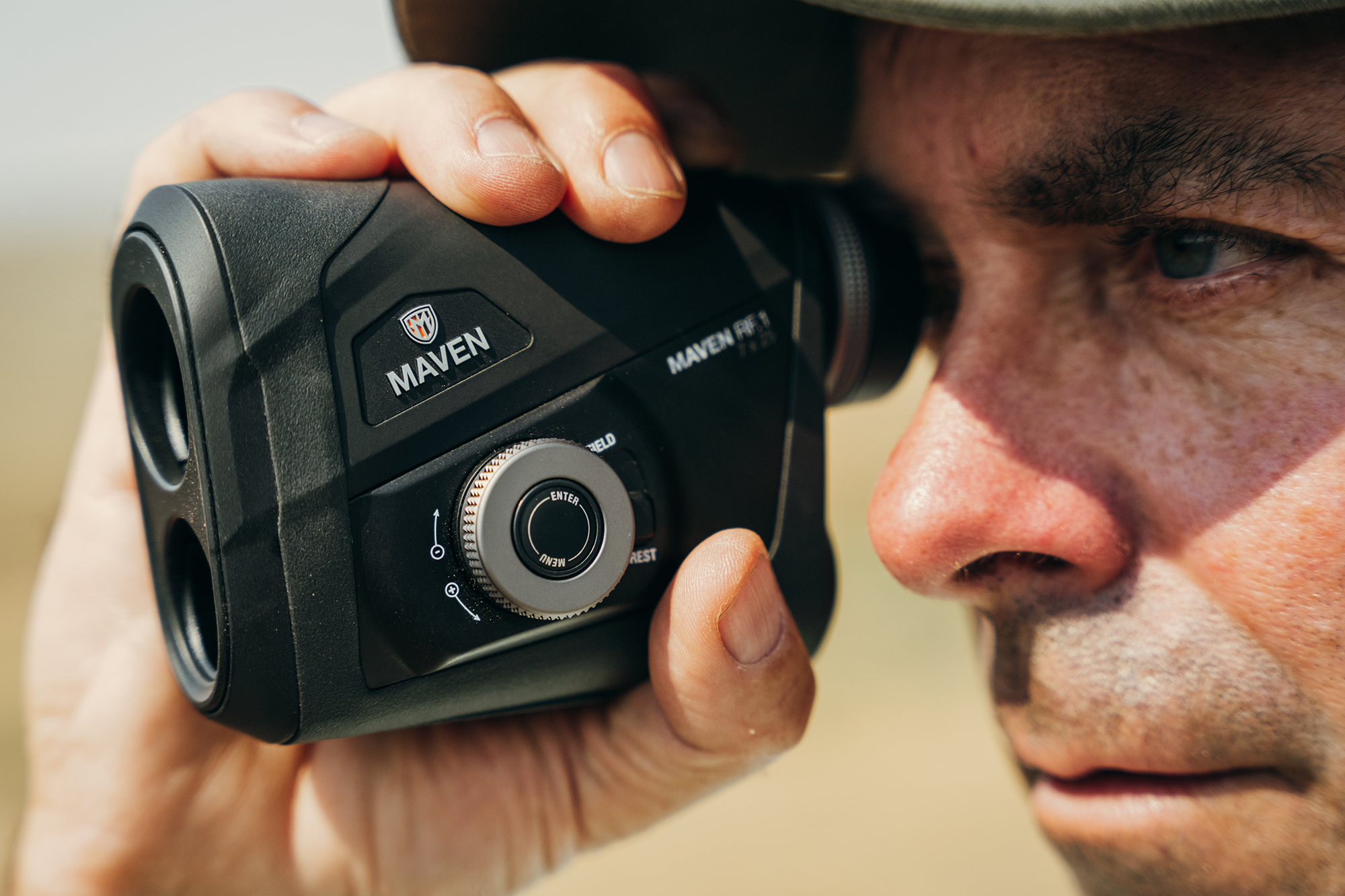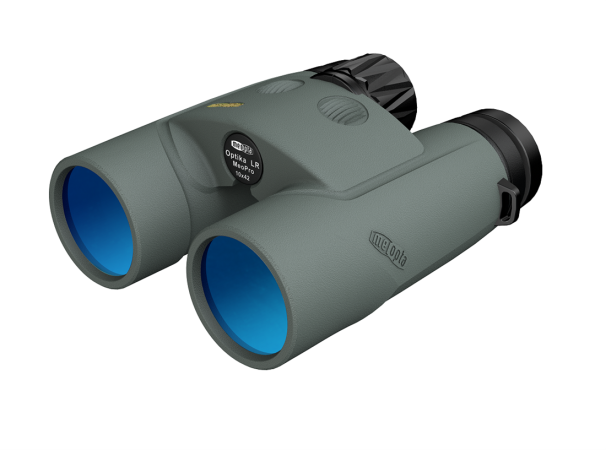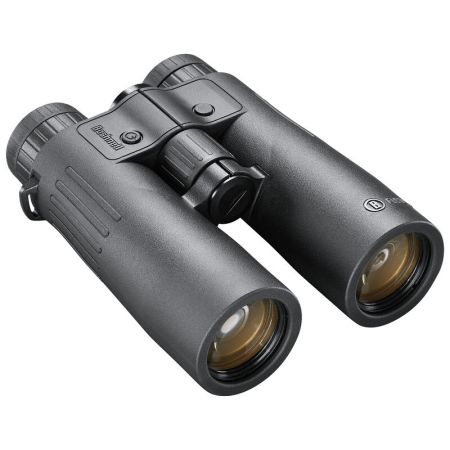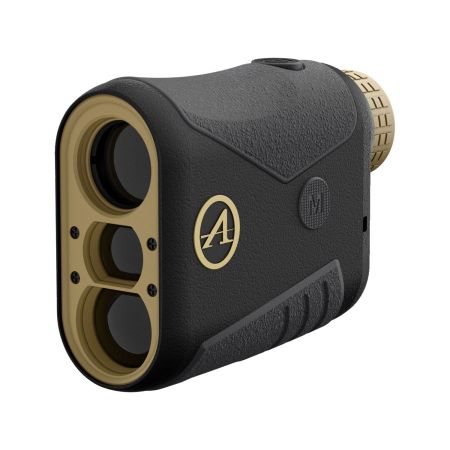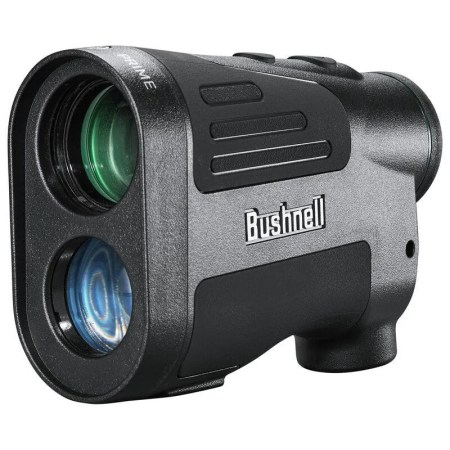We may earn revenue from the products available on this page and participate in affiliate programs. Learn More ›
Evaluating a rangefinder or rangefinding binocular is quite different than testing a standard bino. Optical clarity is only a small attribute of a laser rangefinder. What really matters, and why you’re considering one over another, is the guts of the device. How strong and precise is the laser? How customizable is the ballistics software? And how does the unit work with other sighting and aiming components in your collection? Fundamentally, how accurate and useful is it?

The answer to all those questions is the basis for our test, which evaluates distance and precision of the laser, then rates the electronic capabilities as well as the visibility of the display and the versatility of the modes, and lastly considers compatibility with ballistics software, mobile apps, and other devices that amplify the utility of each unit. Of course, we’re also considering ergonomics, durability, affordability, and innovation.
Rangefinders vs. Rangefinding Binoculars
This year our field of eight submissions was split evenly into handheld rangefinding monoculars and rangefinding binoculars. The category shares some commonalities: all are built around eye-safe Class I lasers and have onboard computational software that measures the length of time the laser beam spends getting to the target, and then converts that time to distance, which shows up in the display. That’s a wild simplification; rangefinders have all sorts of modes and customizable features.
But because rangefinding binoculars can pack so much more optical and computation horsepower in their larger chassis, it’s unfair to compare them to monoculars. So we evaluated each platform on its own merits, but there’s enough crossover between rangefinding types that we present them here as one big, messy category.
The Best Rangefinding Binoculars
EDITOR’S CHOICE: SIG Sauer KILO10K-ABS 10×42
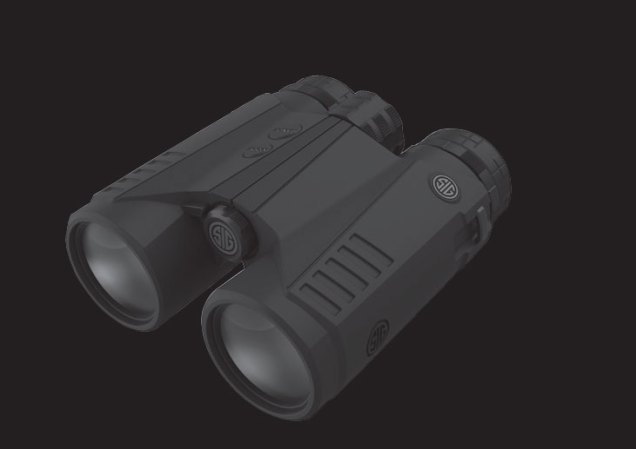
It’s safe to say that, outside military applications, there is no rangefinding binocular with as much power, versatility, and ballistics integration as the new KILO10K from Sig. We’ll detail some of the astounding capabilities here, but it really is one of those products that you need to handle and use to fully appreciate.
Let’s start with the name. Sig’s naming convention uses the distance capability in the name of each successive model. We’ve had the KILO3000, for 3,000-yard ranging capability, and the 5K is in our monocular test. This is a 10,000-yard rangefinding binocular, or capable of ranging targets out past six miles (the company claims 6.5 miles). Will you ever need that much reach? Probably not, and we should note that we were not able to read targets beyond 6,631 yards, which may have been an effect of wildfire smoke during our testing window. Almost as amazing as its distance is its close-in ranging; we got targets as close as 5 yards.
The display is unlike any on the market. It’s an active-matrix heads-up display that provides full ballistic data, along with targeting data and basic ranging information as well as environmental conditions such as temperature, elevation, and barometric pressure. The 700-pixel display is brighter and more visible than almost any in the field thanks to a new class of light-emitting diodes and proprietary coatings that make the display pop against the background. Among its many other attributes it provides a wind cue to shooters, thanks to input from a separate wind meter that ships with the unit and connects to the binocular through a Bluetooth connection.

The KILO10K includes a compass that gives users either cardinal directions or angular headings in degrees. It contains a series of customizable reticles that can be nudged in 1-pixel increments to collimate with the laser beam. And it has what Sig calls its XR, or extended range mode. In XR, the number of returns slow down but deliver much more information to the unit in order to range extremely small targets at extreme distances.
Outside the device, the unit connects to Kestrel and Garmin shooting aids, and to Sig’s excellent BDX mobile app that contains the full suite of Applied Ballistics Elite bullet profiles, drag curves, and even bullet spin drifts. The app also enables users to configure the display, and port custom bullet profiles to the device.
We love the premium Sig harness and the wind meter, and gave the glass excellent scores for both low-light performance and optical resolution. This is a hard unit to use with a single hand, but we really appreciate the tripod mount on the front of the hinge. Many rangefinding binoculars use this space for either their laser diode or their battery compartment, which complicates tripod mounting. Not so for the Sig, which is a good thing, because in order to use many of the KILO10K’s impressive features, as well as trying to get a range outside of two miles, you simply must have the unit steadied on a tripod.
For one of the most impressive integrations of electronics and optics we’ve seen, for the huge amount of information this device delivers to serious long-range shooters, and for a surprisingly accessible price, the KILO10K-ABS is a runaway winner for Editor’s Choice award in the rangefinding category. MSRP: $1,700
Meopta Optika LR 10×42
A new category for Meopta, the Optika LR is a good freshman effort, with excellent glass and a robust chassis that contains an adequate rangefinder. We got close (2,200 yards) to the stated range of 2,600 yards on reflective targets and ranged targets as close as six yards.
The Optika posted the highest optical resolution scores in the category and testers liked the excellent colors and contrast of the image. We liked the substantial feel of the magnesium chassis and the precision of the focus wheel, as well as the Euro-styled felt-and-nylon case.
If we have a complaint, it’s that Meopta’s laser engine is a touch slower than its peers in the category, and the laser rangefinding menu is a little pedestrian. It features first and best target modes, line-of-sight versus angle-compensated ranging, and five brightness settings. But that’s it. There is no ballistics library or ability to link to a mobile app or other device to inform the ranging function.
That stripped-down capability is actually sort of refreshing. One tester noted the elegance of this system and clean display, uncluttered by information about elevation and wind holds. If you’re looking for a very capable binocular paired with a serviceable rangefinder, the Meopta is a good choice. MSRP: $1,499
Vortex Fury HD 5000 AB 10×42
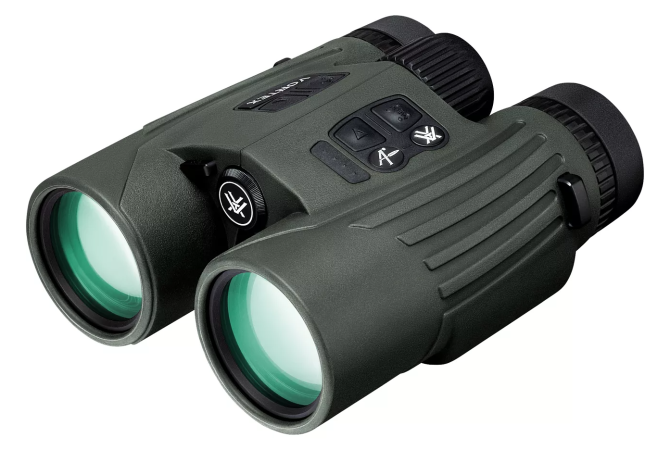
Vortex has baked in some very thoughtful precision-shooting features to the Fury HD 5000 that it introduced a couple years ago. For starters, the AB in its name refers to the full suite of ballistics solutions provided by Applied Ballistics Elite which are delivered by pairing the Fury with Vortex’s mobile app. The linkage provides the ability to customize bullet profiles and behaviors which then show up as range-adjusted aiming solutions in the red LED display.
Vortex claims the reach of the laser on reflective targets is 5,000 yards—hence the name—but we were able to get readings out to 4,020 yards. That’s by no means a ding on Vortex; we found with every unit in our test we were unable to quite get the advertised distance. We ranged cows at almost 1,600 yards and got readings as close as 5 yards, a feature that should appeal to bowhunters.
We also noted that out to 2,400 yards, readings were repeatable. Beyond about 2,600 yards, we had to either use the scan mode or take multiple single lazing attempts to get readings. The reticle was slightly out of collimation with the laser, another common deficiency among all units in the test. Also common to units that link via Bluetooth to a Kestrel or similar device: the connection noticeably slows the output speed of the unit.
Unique to the Vortex is the disappointing optical quality of the Fury. The unit scored at the bottom end of our resolution test and was third in our low-light evaluation. We noted some peripheral distortion and the image seemed dark and a little grainy.
On the plus side, this was one of the faster rangefinders in our test. The integration with Applied Ballistics solutions was spot-on, and the capability of adding wind holds either through the app or by using buttons on the Fury itself is a feature that’s hard to find at this—or any—price point. We loved the premium Vortex chest harness that ships with this unit. The Fury HD 5000 AB retails for $2,000, but we found real-world pricing to be around $1,200.
Bottom line: There’s a ton of features that will make serious shooters and tech-savvy hunters better shots. The optics will disappoint, but the brains inside this very useful rangefinding binocular certainly will not.
Bushnell Fusion X 10×42
Bushnell’s Fusion 1-Mile was one of the industry’s first laser rangefinding binoculars, introduced fully two decades ago, and you can see DNA from that groundbreaking unit in the looks and functionality of many of its peers. With that heritage, it’s nice to see that Bushnell has upped its game with the introduction of the Fusion X. We’re especially impressed with Bushnell’s “ActivSynch” display, which automatically changes color depending on light conditions.
The guts of the Fusion X are similar to those of the Prime 1800 hand-held rangefinder, which we detail later in this review. Users can toggle between bow and rifle modes, line-of-sight or angle-compensated modes, near and far targets modes, and holdover references for both rifle and archery shooters.
Bushnell states the range as 1,760 yards on reflective targets, 900 yards on trees, and 700 yards on deer. We couldn’t quite get that. Our farthest reading was just under 1,200 yards, and beyond 700 yards we had a hard time getting repeatable readings. However, inside 700 yards, we found the unit very sensitive, especially once we found the sweet spot of the reticle. The laser’s speed is excellent, and the return-signal indicator is a surprisingly useful feature.
On the downside, it’s hard to overlook the disappointing optics. The image is dark and we detected significant peripheral distortion. The low-light performance was at the bottom of the field, and testers spent a good deal of time fiddling with all three focus dials—in each barrel and the center knob—in order to get the display and image to remain in focus. We also would like to see a designated tripod mount.
There is no Bluetooth connection to a mobile app, but as we noted with the Meopta, the simplicity of the Fusion X is both refreshing and keeps the price at a very accessible point.
We have to talk about Bushnell’s “ActivSynch” display, which is a game-changer in rangefinding displays. In bright light, the display shows as a rich black and is easily visible against a wide variety of backgrounds. But in dark conditions, the display automatically converts to a highly visible red. This would be an excellent choice for a bowhunter, pig hunter, or just about any shooting that takes place in a wide variety of light conditions. The fact that it changes automatically, without having to revisit the menu settings or take a chance on getting your retina burned up by intense LED brightness, makes it highly versatile.
Overall, this is a decent mid-distance rangefinder that gets extra points for the accessible price and Bushnell’s “Ironclad” lifetime, fully transferable warranty. MSRP: $699
Best New Rangefinders
GREAT BUY: Maven RF.1
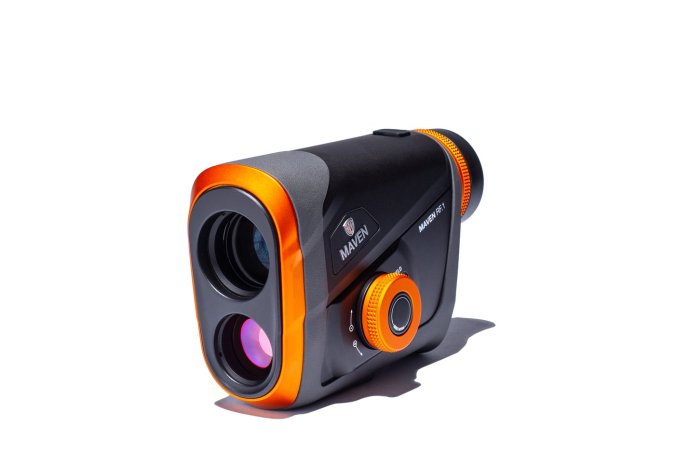
Maven’s first laser rangefinder is a powerhouse of both utility and innovation. It was one of the most powerful and sensitive units we tested, the controls are smart and useful, and the price is extremely competitive. For all those reasons, it gets our Great Buy award for this year’s laser rangefinding category.
Let’s start with its extensive reach. Maven claims ranges out to 4,500 yards on reflective targets, 3,000 yards on trees, and 2,700 yards on deer-sized targets. We didn’t quite get that, but we did get multiple hits out to 3,800 yards on the steel roof of a distant barn, and one tester got 2,303 yards on the receiver box on a distant cell tower. On the other end of the distance spectrum, we got readings as close as five yards.
The 7X monocular is clear and surprisingly bright. The only optical aberration we found was slight blurring on the edge of the glass, but it was only noticeable when mounted on a tripod. Inside the unit, the red LED display allows users to toggle between line-of-sight and angle-compensated modes as well as five reticle choices.
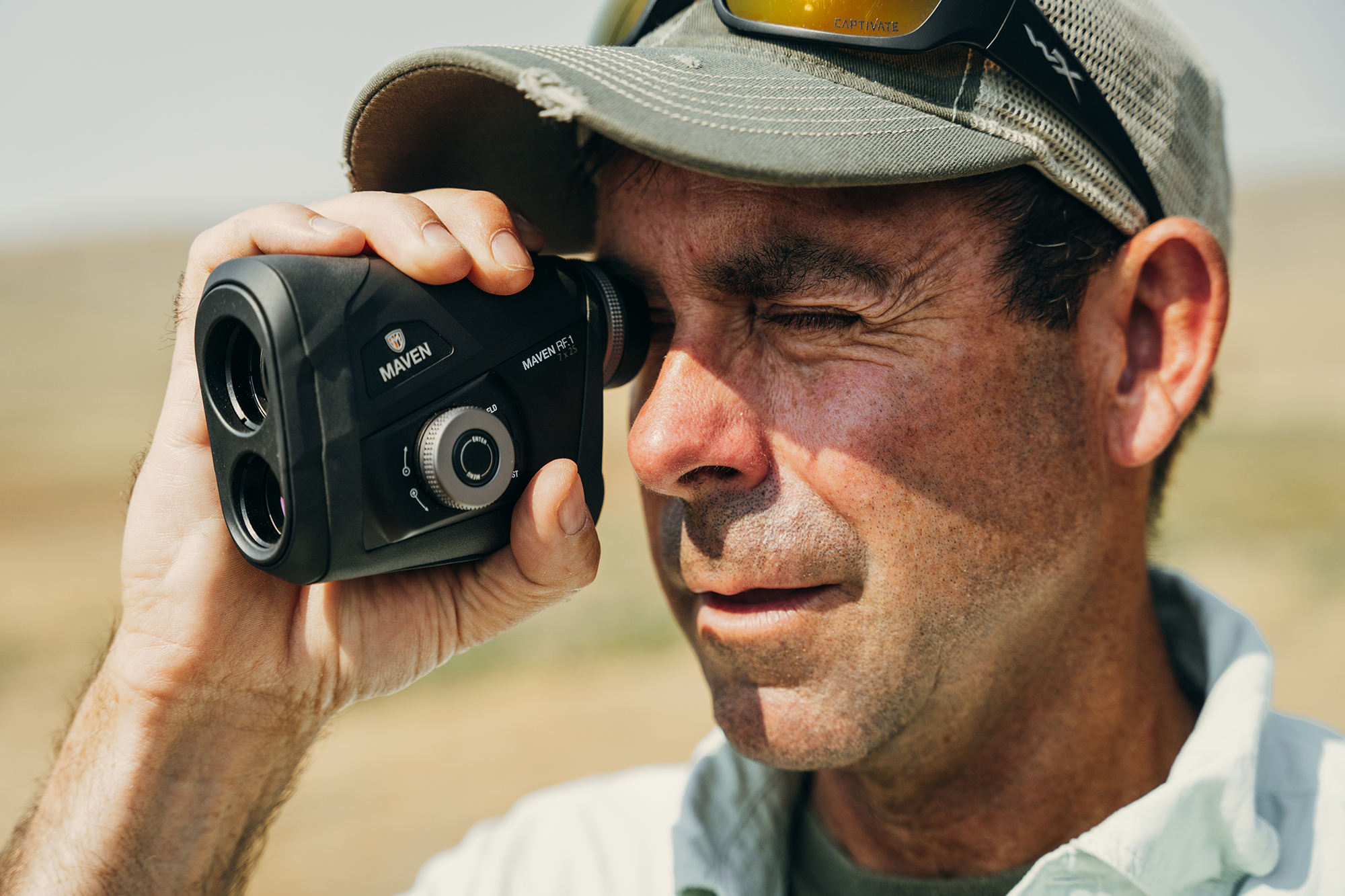
But it’s what’s on the exterior of the RF.1 that’s groundbreaking. Users can switch between best and last target modes—Maven calls these “Field” and “Forest” modes—with the switch of a small lever on the side of the RF.1. A dial on the outside of the menu button adjusts the display intensity as well as allowing users to navigate the menu. It’s fast, smart, and solves the tedious problem of racking through tons of menu choices by toggling through display screens.
The tripod mount is a key feature, and we loved the hand-filling feel of the unit. The focus and eyecup extensions are both precise and positive. In all, it’s an extremely useful and versatile unit, and at $400, it’s one of the true bargains of this year’s test. MSRP: $400; www.mavenbuilt.com
SIG Sauer KILO5K
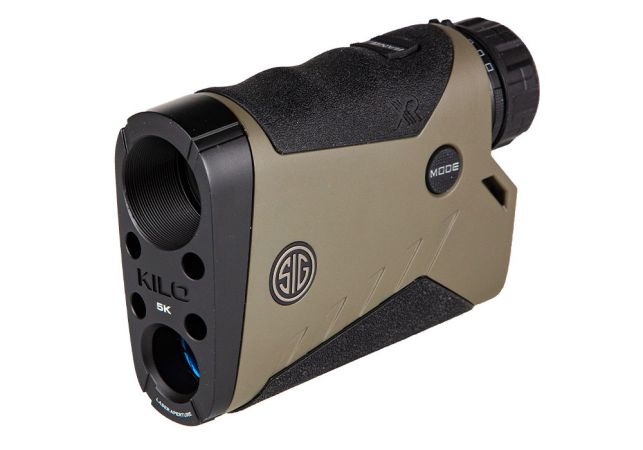
The latest front in Sig’s rangefinding juggernaut, the KILO5K has an impressive amount of technology and power built into the little handheld unit.
A successor to Sig’s KILO2400 BDX model, the KILO5K has an upgraded ranging engine that gives it extremely fast readings out to 5,000 yards (advertised). We didn’t quite get that. We got repeatable readings out to 3,888 yards on a grassy hillside, to 1,822 yards on a cow, and got readings as close as 5 yards. However, the returns are among the fastest in our test, regardless of platform.
The 5K is fully compatible with Sig’s BDX system, including both the mobile app as well as BDX-configured riflescopes. It also mates via Bluetooth with Kestrel units for more informed shooting solutions. Ranging modes include first, best, last, XR (extended range), and fog. The last two are interesting additions. The XR mode slows down the return rate, but adds additional sensitivity to the processor, allowing users to detect smaller, more distant targets. And the fog mode is useful for ranging through windows and in grainy light conditions.
When paired with the BDX app, all ranging solutions are informed with customized drop adjustments. But the KILO5K includes what Sig calls the “BDX Ultralight” mode that gives standard bullet-drop compensations out to 800 yards. It’s an excellent feature, especially if you don’t have connection to the app or simply want to use this with other rifles and ballistics systems.
The optics in the 7X lens are good, though we detected some blue color fringing, probably a result of coatings used to accentuate the display. The reticle is selectable from a single aiming point to a hash with wind holds.
It wouldn’t be an Outdoor Life optics test without calling attention to some deficiencies. The biggest is the lack of a threaded tripod adapter. These high-power units are at their best when stabilized on a tripod, and while users can get Sig’s proprietary tripod mounting bracket, that seems unnecessary when a simple adapter would offer so much service for so little money.
But if that’s the only ding we could really find, that tells you about the amount of technology and versatility that is baked into this unit. Considering all the features inside this marvel, we thought the price was right in line with the performance. $779
Athlon Midas 1 Mile
This is a basic handheld rangefinder, and an excellent choice for a rifle or archery shooter on a budget.
The Midas 1 Mile was one of the few that came close to its advertised ranging capability. Its name indicates its promise, and we were able to range hillsides at 1,440 yards. We picked up cows at 840 yards, and got close readings to 5 yards.
All testers noted that beyond about 1,000 yards, it took multiple firings to obtain a range. That’s probably an indication of beam divergence of the laser. Inside about 600 yards, we had excellent repeatability of the ranging. A tripod mounting adapter might help with that, but one of the deficiencies we noted with the Athlon (along with the Sig KILO5K) is the lack of this simple feature.
We also took points from the Midas 1 Mile’s optics delivered by its 6X lens. They were clear enough in good light conditions, but lost light easily, and the red LED display tended to compound the problem, as though reflected light inside the unit degraded the image. We also noted that the display was the least sharp in our test.
The feature menu is basic, but solid. The Athlon has best/first/last target modes, a scan mode, and both line-of-sight and angle-compensated modes. It has no ballistic library or holdover option, and does not connect to other devices. In that way, it’s your basic laser rangefinder.
We thought the price was right, and would recommend this to either rifle shooters or archers looking for a solid, accessible rangefinding monocular. MSRP: $269
Bushnell Prime 1800
With this little, light, and very smart handheld unit, Bushnell has a rangefinding hit on its hand. There’s plenty the Prime 1800 doesn’t do. It doesn’t connect to a mobile app or a shooting station via Bluetooth. It doesn’t have an extensive library of ballistics groups. And it doesn’t have a built-in weather system.
But what it does have is a fast and reliable laser paired with decent optics and a basic menu of targeting options that are delivered by the best display in the business, Bushnell’s “ActivSynch” light-sensitive display.
The unit’s name implies its ranging promise. We weren’t able to achieve any 1,800-yard readings. The best we could manage was 1,742 on a hillside, and as close as 5 yards. But that wide range makes this a good choice for rifle hunters or archers on a budget.
It delivered fast, repeatable readings inside 600 yards, which is about as far as most hunters are needing ranging, anyway. Outside about 1,000 yards, the return processor was slow, creating a noticeable lag time.
We liked the reticle focus control, and didn’t have any quibbles with the image or color rendition, and the image was satisfyingly bright. The near and far target modes are among the most sensitive we tested, and the line-of-sight and angle-compensated modes are spot-on. The “ActivSynch” display, which changes automatically from black to red depending on light conditions, is a nice feature on a price-point rangefinder.
And we loved the threaded tripod adapter as well as the hand-gripping ergonomics of this unit. The palm swell enabled us to capably use this in a wide variety of positions and even when our hands were shaking with the close proximity of game. How close can you get? That’s precisely why you need this priced-right laser rangefinder, in order to find out for yourself. MSRP: $249
The Upshot
Overall, we are impressed with the functionality of all the units. The latest class of lasers are fast and precise, and brands are doing a better job of pairing quality glass with their electronics. Displays are generally intuitive and easily adjusted to a wide variety of uses. And prices, even for pretty exotic electronics, are overall pretty reasonable.
